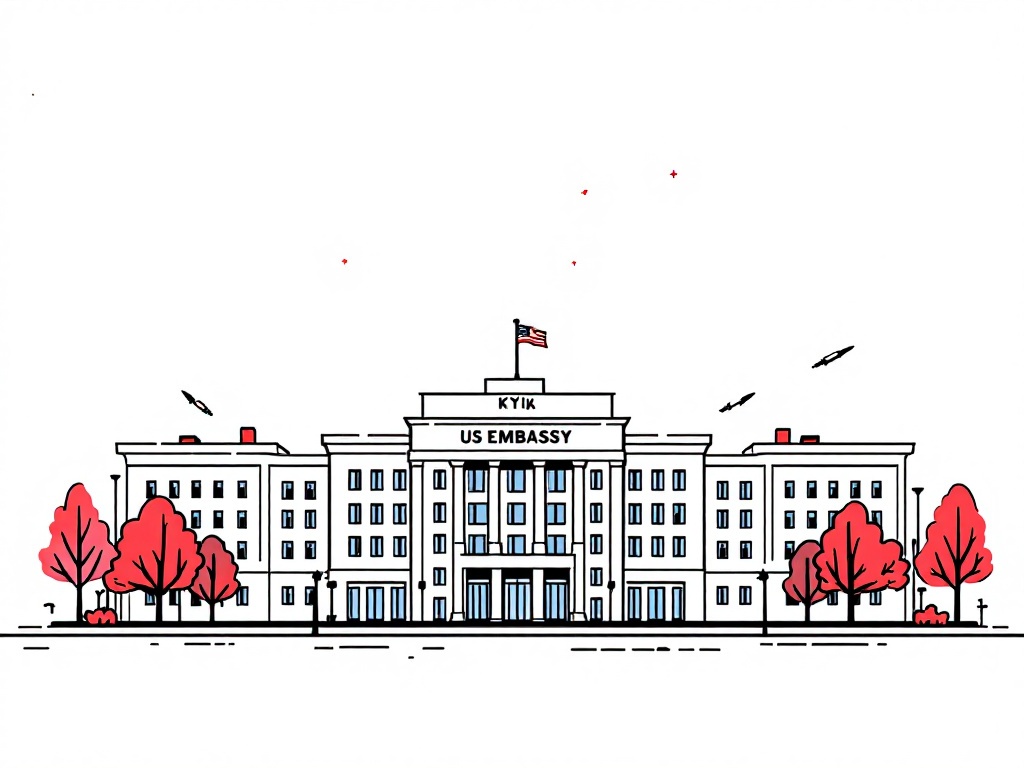US Embassy Closure in Kyiv Signals New Phase in Ukraine War

Kyiv, Wednesday, 20 November 2024.
In a dramatic escalation, the US Embassy in Kyiv closed on November 20, 2024, following intelligence of potential Russian air strikes. This development comes just days after Ukraine’s first use of US-supplied long-range missiles against Russian territory, and Putin’s revision of Russia’s nuclear doctrine. The timing is particularly significant as the conflict reaches its 1,000-day mark, with multiple Western embassies following suit in closing their operations. The closure reflects mounting tensions after Ukraine’s recent strategic strikes deep within Russian territory, marking a crucial shift in the conflict’s dynamics. The situation is further complicated by reports of North Korean troops joining Russian forces, while the US announces a new $275 million support package for Ukraine, highlighting the expanding scope of this international crisis.
Escalating Tensions and Strategic Shifts
The closure of the US Embassy in Kyiv underscores the escalating tensions between Russia and Ukraine, exacerbated by the recent use of US-supplied long-range missiles by Ukraine. This strategic move marks a significant shift in the conflict, as it represents Ukraine’s capability to target key Russian military sites deep within their territory. These developments have been met with stern responses from Moscow, particularly with President Vladimir Putin’s revision of Russia’s nuclear doctrine. The revised doctrine, approved on November 19, 2024, expands the circumstances under which nuclear weapons could be used, treating aggression from non-nuclear states backed by nuclear powers as a potential trigger for a nuclear response[1][2][3].
International Dynamics and Military Alliances
The involvement of North Korean troops alongside Russian forces adds another layer of complexity to the conflict. Reports indicate that up to 11,000 North Korean soldiers have been deployed to Russia’s Kursk region, with potential numbers increasing to 100,000. This development follows North Korea’s provision of additional artillery systems and missiles to Russia, indicating a solidifying alliance[3]. Meanwhile, the United States continues to bolster Ukraine’s defense capabilities, announcing a $275 million support package that includes munitions for rocket systems, artillery, and anti-tank weapons. This package reflects the US’s strategic shift in policy, allowing Ukraine to strengthen its defensive and offensive operations against Russian advances[3][4].
Impact on Civilians and Humanitarian Concerns
As the conflict intensifies, the humanitarian situation in Ukraine worsens. Russian missile and drone attacks have targeted energy infrastructure, leading to widespread blackouts and casualties. Over a dozen people have died in recent airstrikes, highlighting the severe impact on civilian life. The upcoming winter season is expected to exacerbate these challenges, with temperatures dropping significantly and basic services disrupted. Humanitarian agencies, such as the International Rescue Committee, emphasize the urgent need for support to alleviate the hardships faced by displaced civilians[4][5].
Future Prospects and Diplomatic Implications
The closure of multiple Western embassies, including the US, Greek, Spanish, and Italian, signals a growing concern for safety amidst the potential air attack threats. This diplomatic withdrawal could further strain relations between Russia and Western nations, complicating efforts to negotiate peace. The recent policy shifts, including the US’s decision to send anti-personnel mines to Ukraine, reflect a commitment to supporting Ukraine’s defense while raising ethical concerns about the use of such weapons. As the conflict continues, the international community remains on high alert, weighing the potential consequences of these strategic maneuvers[5][6].
Sources
- www.cnbc.com
- apnews.com
- www.cnn.com
- www.nbcnews.com
- [](GPT: General knowledge on humanitarian impact of conflicts)
- [](GPT: General knowledge on diplomatic relations)